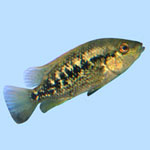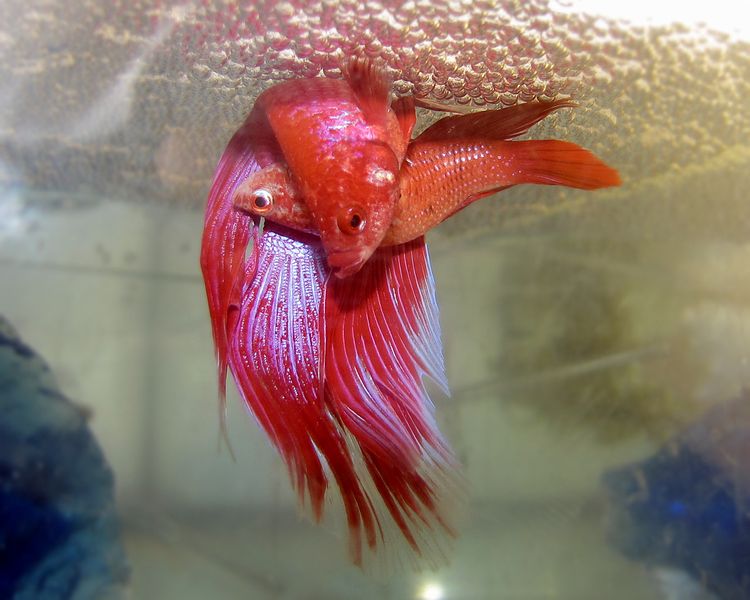
Let’s talk a little about this gem from Mexico. Bartoni is restricted to the springs of Rio Verde. Water conditions may vary from place to place with pH ranging from 7.6 – 8.0 with a stable hardness (100 degrees German and a carbonate of 15 degrees). A robust male Bartoni can reach lengths up to 8 inches, while females reach a little over 4 inches. Males also develop a nice little forehead hump.
Their normal coloration is gray to light brown with a row of black blotches running from behind the eye to the base of the caudal fin. Some scales in the lower half of the body have a blue spot. But the breeding coloration is outstanding, and it’s also one of the main reasons I want to keep this fish. In both sexes, the upper half of the body turns white while the lower half becomes velvety black, including the fins.
In the wild, Bartoni mainly dine on algae, but so far they have done well on frozen cyclops and flakes while in holding. I would make sure that they get a flake high in veggie matter.
Pairs tend to either spawn in caves or beside rocks. The size of the clutch dependes on how old the female is, with an adult producing as many as a couple hundred eggs each spawn. At 84 F the eggs hatch in about two and a half days. In another five days, the fry should start to become free swimming after they consume their egg sacs. The females does most of the brood tending inside the cave while the male guards the perimeter. At any sign of danger, instead of running away like most Central American cichlids he will enter the spawning cave and wait with his mate until the danger goes away. Both parents take care of the fry when it comes to feeding time.
Bartoni generally tend to be very aggressive towards conspecifics, and sometimes their aggression may extend to other species in aquariums smaller than a 50 gallons.
It is believed in many circles that this species and others may become endangered in the near future, due to the introduction of a tilapia to their native waterways. What a shame that would be! If you have room for a 30 or a 40 gallon aquarium, this would be an awesome fish to add to your collection, and you can do your part to conserve them through captive breeding.
Until next time,
Jose
 That Fish Blog – Aquarium Advice and Information
That Fish Blog – Aquarium Advice and Information



